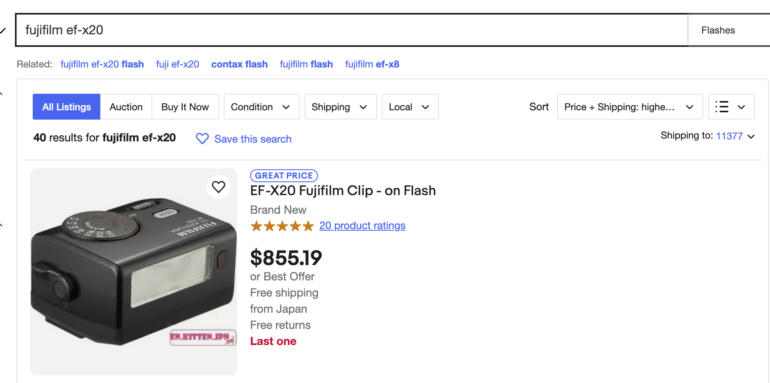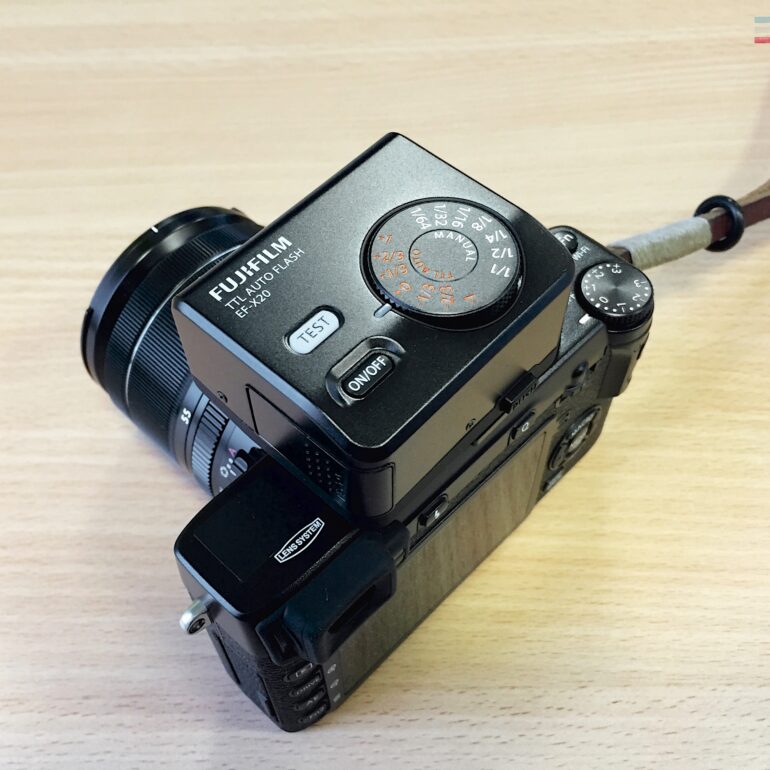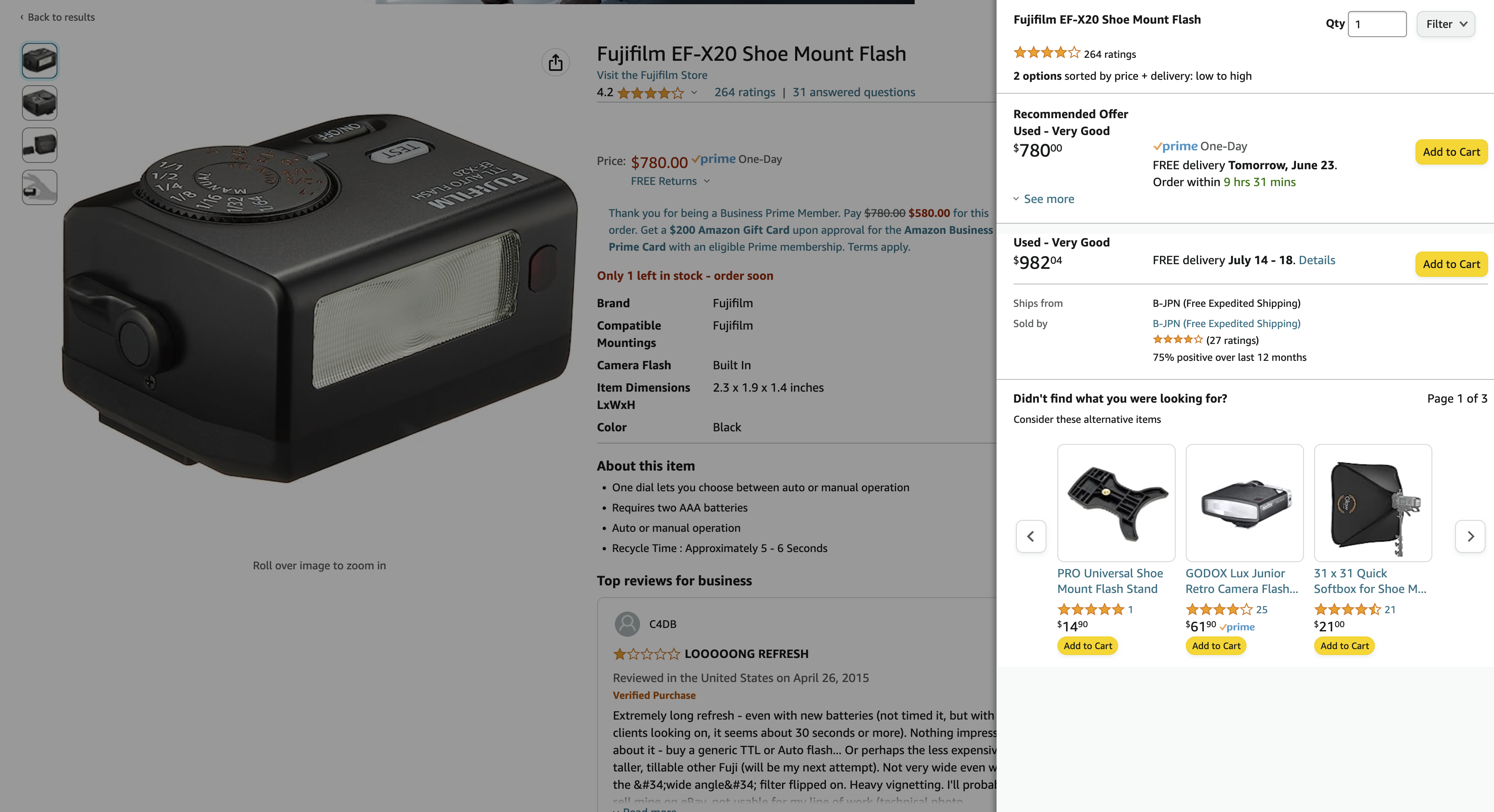Last Updated on 06/22/2023 by Chris Gampat
Years ago, when the Fujifilm EF-X20 launched for only $120, photographers fell head over heels for it. That is until they realized how majorly underpowered and weak it is. For street photography- a core segment of Fujifilm’s market- it suited them so well. Then Fujifilm discontinued the seductive little flash. Like the Fujifilm X100V before it, it’s shot up in price on the second-hand market. And in some cases, it can go for nearly $1,000.
When the Fujifilm EF-X20 launched, no unbiased and accredited publications reviewed it. As it is, it’s difficult to get readers to pay attention to lights because there are so many natural light photographers. Our Creating the Photograph series tried to help photographers with this.
The Phoblographer has a rich history of reviewing lights and various other photography accessories, and even we stepped away from reviewing the EF-X20. In conclusion, you can’t find reviews on the flash that you can prove aren’t unbiased or compensated for in one way or another. Instead, you’ll find folks cosplaying as journalists at best.
And as it is, there are only a handful of noteworthy photography publications left now — and it isn’t because of YouTube.
Table of Contents
What was the Fujifilm EF-X20?
The Fujifilm EF-X20 was a pretty special flash on the outside. It donned all the flirtatious retro beauty that many photographers are smitten for. According to the official Fujifilm listing, here’s what you need to know about it:
- Guide number 20 output (weak)
- Does TTL
- Made of metal
- Retro dials to match the Fuji aesthetic
- Built-in wide-diffuser to make light output softer
- Manual output is available
- It had a mount-locking button
- It could also operate as a wireless slave
Here are more of the official specs if you wish.
| Model Name | EF-X20 |
|---|---|
| Guide Number(ISO100,m) | 20(12 when Wide panel is used) |
| Color temperature | Approximately 5600K at full power |
| Effective TTL flash range | |
| Manual flash output | 1/1, 1/2, 1/4, 1/8, 1/16, 1/32, or 1/64 |
| Exposure compensation | +1 to -1 in increments of 1/3 EV |
| Slave mode | Available (per-flash and non-pre-flash control supported) |
| Power source | Two AAA alkaline or Ni-MH batteries |
| Operating temperature | 0°C to 40°C (32°F to 104°F) |
| Dimensions(H x W x D) | 36.0 x 59.5 x 50.0mm(1.4 x 2.3 x 1.9in) |
| Weight | Approximately 100g(3.5 oz), excluding batteries |
It’s important to specifically type in Fujifilm EF-X20 when searching for it unless you accidentally search for the Fujifilm X20 — a 10-year-old camera at this point.
The Price Change
When the flash launched over a decade ago, it cost photographers only $120. No, while inflation is bad, it isn’t that bad to make it shoot up a whole lot. However, online searches lead you to find it for more money than it was worth.

- The highest price on eBay as of publishing this article is $855.19
- A used price on Amazon lists it for almost $980.
- Mercari lists the Fujifilm EF-X20 for $450, approximately
We asked Fujifilm about this flash, and here’s what Daniel Carpenter from the Camera Division told us:
Fujifilm is always innovating to provide the latest camera technology to our customers. EF-X20 was the original flash launched with the X-Pro1 in 2012, and was designed to complement that camera and the early X-E1 lineup. As the X Series camera line evolved, Fujifilm expanded its offerings of flash to better accommodate all of our camera systems. As part of the product lifecycle, older models are discontinued in order to introduce newer, more technologically advanced products that best suit our customers’ creative needs and wants. In this spirit of continuous innovation, the EF-X20 flash has been discontinued, but we are excited to recommend the following advanced flash products to our consumers, which offer a much more versatile feature set: EF60 complemented by EF-W1 Wireless Commander.
Daniel Carpenter from FUJIFILM North America Corporation’s Corporate Communications group
While photographers didn’t appreciate it when it launched, it’s clear that some do now. But why?
Why So Pricey Now? Photographers Blame Tik Tok
It’s curious: why this flash, and why now? We asked several Fujifilm photographers who we’ve interviewed in the past what they think.
“It looks like the Contax one, and it’s good for street photography,” said street photographer Brent Eysler to us when we asked about why it got so expensive. “But for me personally, the fact that it used AAA batteries and had a slow recharge time never made it useful.” This statement resonates with the fact that so many other photographers also found it to be very weak. Yet some probably end up shooting at super high ISOs to compensate for the Fujifilm EF-X20’s very weak output.
However, other photographers have different thoughts: and they believe that it has to do with Tik Tok. Photographer Kevin Mullins infers that we’re seeing history more or less repeat itself. “… it’s very retro looking, and given the way the TikTok generation have adopted the X100V, I’d say it’s in demand more for its looks than its functionality,” he explains to the Photographer. “Maybe a lot of the Tik Tockers don’t even realize the X100V has a very capable built-in flash.” Kevin, who loves the Fujifilm X70, is one of those who yearn for more of the cool stuff that Fujifilm did.

Photographer Brenton Geisey reasons that maybe someone at Fujifilm is trying to cause a bit of social media stir. “I think it’s obvious that Fuji is trying to fill the TikTok/ Film niche that they so luckily found themselves in with YouTubers and TikTokers’ discovering’ the X100 series last year- at the same time as they also discontinue or stop producing films,” he tells us. “This flash looks just like the Contax TLA flash, which might explain why they’re trying to jack the price up.” Still, other photographers are aligned with what these folks say.
Despite photographers saying this, a search on TikTok doesn’t give us anything. A YouTube search yields no recent videos posted around the Fujifilm Ef-X20. The most recent one is from the F Stops Here, made in 2022. Given how social media fed the craze that helps us see tons of Fujifilm X100v series cameras in the streets, it’s a good inference. Gen Z and Millennials, who make up most of the readers of this website, are probably the ones buying the flash after getting into photography for the first time. The retro good looks that it has are proof that the camera manufacturers should lean into it more. This is further fueled by the massive demand for the flash now as people are buying it up and charging nearly 10x what it originally cost. Despite this, Fujifilm launched the XH2 and XH2s while citing that they need to diversify beyond the retro audience. In truth, though, the XT5 and these retro products are the ones that are very much in demand. And as one other photographer thinks: people just want something real.
To explain this further, photographer Corey Boland laid out his feelings to us. Simply put, he believes that the new generation of photographers want raw and real photography — and a small on-camera flash can do just that. “The newest generation of creatives are sick of hyper-curated images,” he explained. “Their entire lives are built on algorithms and pushed ads. They crave something real, simple, and unadulterated.” He continued to reason that on-camera flash is familiar to those of us whose parents used disposable film cameras but provides simplicity to the real moments.
Corey also believes that it’s an issue around supply and demand. Fuji discontinued the flash a while back, so it’s not around anymore — but the demand is high. It’s similar to how the Contax T2 became the most expensive point-and-shoot camera on the market. “Look at the scarcity of the x100v,” states Corey. “It also ticks all of those boxes. So why wouldn’t someone want a tool that reinforces the look of ‘in-the-moment?'”
Thanks to Giulio Scorio for the lead. Fujifilm EF-X20 Lifestyle photo by Kārlis Dambrāns and used with Creative Commons Permissions.


